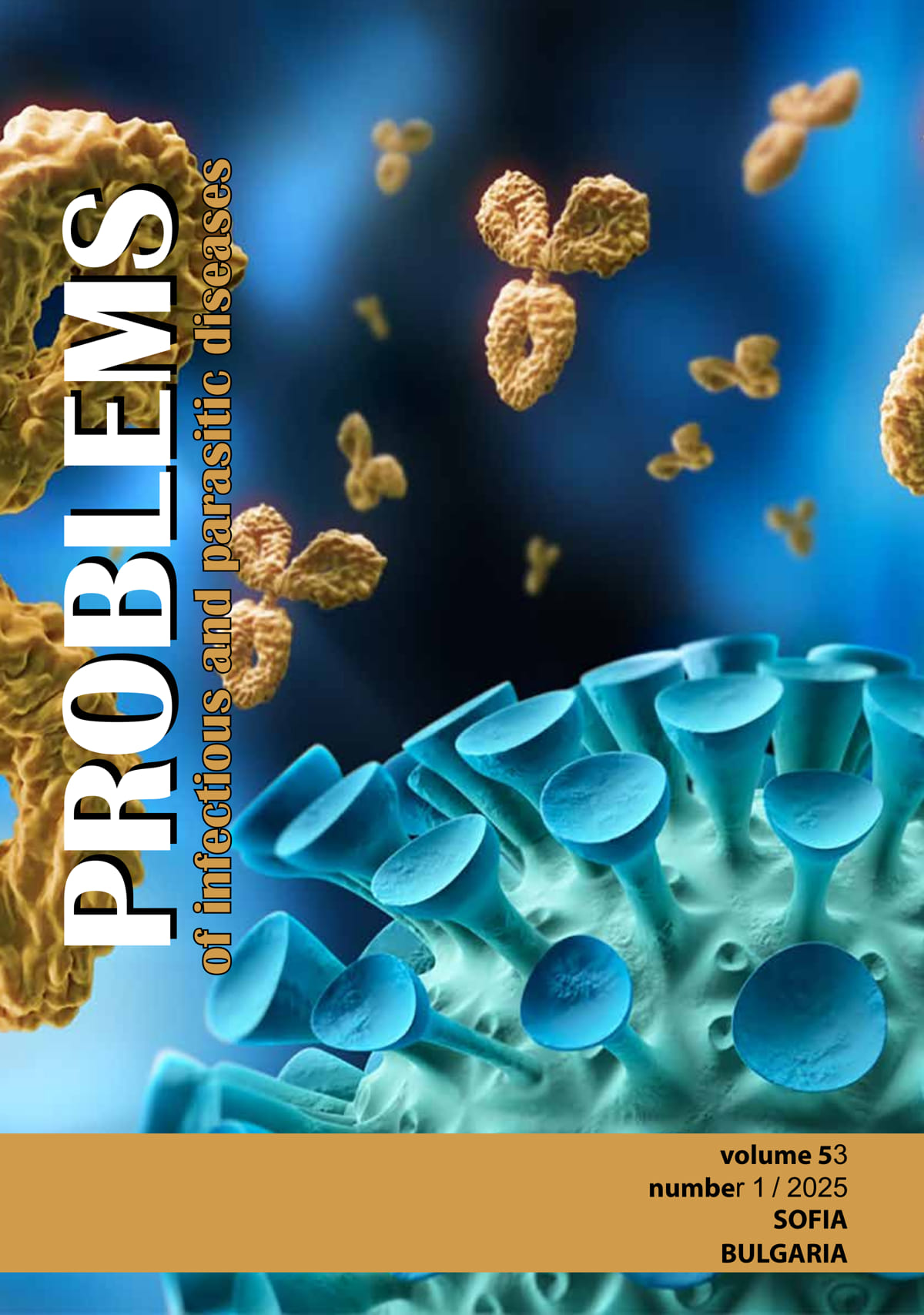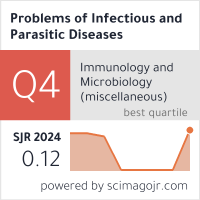ATTITUDE AND KNOWLEDGE OF HIV INFECTION AMONG HEALTH PERSONNEL IN BULGARIA
DOI:
https://doi.org/10.58395/de3b1827Keywords:
HIV/AIDS, stigma, healthcare workers, people living with HIVAbstract
Background Addressing HIV-related stigma among healthcare workers is vital in the era of contemporary antiretroviral therapy (cART). It is equally important for stimulating early diagnosis, and for meeting the complex medical needs of people living with HIV (PLHIV).
Material and Methods. We analyzed the results of anonymous local survey comprised of 18 closed-choice questions on the knowledge and attitude towards HIV infection and PLHIV. The survey was conducted among 91 Bulgarian healthcare workers as a part of a large cross-national study in Europe and Central Asia, launched by ECDC and EACS in 2023.
Results. The respondents were predominantly women (65,7%) working mostly as medical doctors (34%), 23% - in a specialized unit for PLHIV, 42% - with over 20 years of experience.
The most important results were: lack of training on PrEP (in 62%), on stigma and discrimination (in 75%). Low level of knowledge on HIV transmission and prevention (in 40%) was associated with anxiety, exaggerated preventive measures and no professional experience with PLHIV. As compared to the mean EACS survey results, specific for Bulgaria were the high prevalence of the misconception “HIV is a result of irresponsible behavior, the ignorance of PrEP, the low rate of administrative sanctions related to PLHIV discrimination, and the low awareness of the availability of PEP.
Conclusions There is an urgent need of targeted and tailored educational programs on HIV-related issues among the different healthcare workers groups. Those should be combined with legislative and administrative measures to assure the implementation of UNAIDS 2030 goals.
Downloads
References
1. Gergen M, Hewitt A, Sanger CB, Striker R. Monitoring immune recovery on HIV therapy: critical, helpful, or waste of money in the current era? AIDS. 2024;38(7):937-943.
2. WHO Regional Office for Europe, European Centre for Disease Prevention and Control. HIV/AIDS surveillance in Europe 2024 – 2023 data. Copenhagen: WHO Regional Office for Europe; 2024.
3. Political Declaration on HIV and AIDS: On the Fast Track to Accelerating the Fight against HIV and to Ending the AIDS Epidemic by 2030. A/RES/70/266. Resolution adopted by the General Assembly on 8 June 2016. United Nations General Assembly, 22 June 2016 https://www.unaids.org/sites/default/files/media_asset/2016-political-declaration-HIV-AIDS_en.pdf
4. National Program for Prevention and Control of HIV and STI in RBulgaria for the period 2021 – 2025. https://www.strategy.bg/StrategicDocuments/View.aspx?lang=bg-BG&Id=1486
5. European Centre for Disease Prevention and Control. HIV stigma in the healthcare setting. Monitoring implementation of the Dublin Declaration on partnership to fight HIV/AIDS in Europe and Central Asia. Stockholm: ECDC; 2024. https://doi.org/10.2900/255834
6. Bloch M, John M, Smith D, Rasmussen TA, Wright E. Managing HIV-associated inflammation and ageing in the era of modern ART. HIV Med 2020; 21 (Suppl 3) :2–16 https://doi.org/10.1111/hiv.12952
7. D.E. Lewis, J.P. Couturier, Chapter 6 - Chronic Inflammation in HIV Pathogenesis: Effects on Immune Cells, Organ Systems, and Systemic Consequences, Editor(s): Jeffrey K. Actor, Keri C. Smith, In Perspectives in Translational Cell Biology, Translational Inflammation, Academic Press, 2019, 111-131.
8. Serrano-Villar S, Sainz T, Lee SA, Hunt PW, Sinclair E, Shacklett BL, et al. HIV-infected individuals with low CD4/CD8 ratio despite effective antiretroviral therapy exhibit altered T cell subsets, heightened CD8R T cell activation, and increased risk of non-AIDS morbidity and mortality. PLoS Pathog 2014; 10: e1004078. https://doi.org/10.1371/journal.ppat.1004078
9. Safreed-Harmon K, Anderson J, Azzopardi-Muscat N, Behrens GMN, d'Arminio Monforte A, Davidovich U, Del Amo J, Kall M, Noori T, Porter K, Lazarus JV. Reorienting health systems to care for people with HIV beyond viral suppression. 2019; The Lancet HIV, 6 (12), e869–e877. https://doi.org/10.1016/s2352-3018(19)30334-0
10. Marshall, A.S., Brewington, K. M., Kathryn Allison, M., Haynes, T. F., & Zaller, N. D. Measuring HIV-related stigma among healthcare providers: a systematic review. 2017; AIDS Care, 29 (11), 1337–1345. https://doi.org/10.1080/09540121.2017.1338654
11. Mahajan AP, Sayles JN, Patel VA, Remien RH, Sawires SR, Ortiz DJ, Szekeres G, Coates TJ. Stigma in the HIV/AIDS epidemic: a review of the literature and recommendations for the way forward. 2008; AIDS. Aug;22 Suppl 2 (Suppl 2): S67-79. https://doi.rg/10.1097/01.aids.0000327438.13291.62
12. Cimen C, Emecen AN, Barber TJ. Attitude of infectious diseases physicians in Turkey about HIV pre-exposure prophylaxis: results of an online survey. 2020; Int J STD AIDS. Jun;31(7):665-670. https://doi.org/10.1177/0956462420921080
13. Schweitzer, AM., Dišković, A., Krongauz, V. et al. Addressing HIV stigma in healthcare, community, and legislative settings in Central and Eastern Europe. 2023; AIDS Res Ther 20, 87 (2023). https://doi.org/10.1186/s12981-023-00585-1
14. Spence AB, Wang C, Michel K, et al. HIV Related Stigma among Healthcare Providers: Opportunities for Education and Training. Journal of the International Association of Providers of AIDS Care (JIAPAC). 2022; 21. https://doi.org/10.1177/23259582221114797
Downloads
Published
Issue
Section
License
Copyright (c) 2025 Radoslava Emilova, Yana Todorova, Maria Nikolova (Author)

This work is licensed under a Creative Commons Attribution 4.0 International License.






